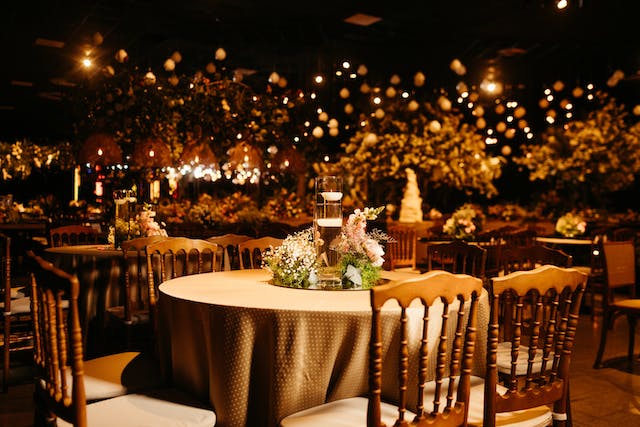
When you think about event planning, you might not immediately consider the intricacies of seating arrangements. However, the psychology of seating plays a crucial role in creating the right atmosphere and ensuring your guests' comfort. Whether you're organizing a wedding, a corporate seminar, or a birthday celebration, understanding how seating affects guest interaction and comfort can make a significant difference in the success of your event. In this blog, we will delve into the fascinating world of seating psychology and its impact on the guest experience. Section 1: The Power of First Impressions The moment guests enter your event venue, the seating arrangement is one of the first things they notice. It sets the tone for the entire experience. Here are a few key considerations to keep in mind: Entrance Seating: Placing comfortable seating near the entrance can create a welcoming space for guests to gather, chat, and feel at ease as they arrive. Focal Point Seating: Position seating areas strategically to highlight important elements like the stage, the dance floor, or a beautiful view, ensuring that guests are drawn to these areas. Section 2: Comfort Equals Happiness Comfortable seating is paramount for ensuring that your guests have a positive experience. Uncomfortable chairs or overcrowded tables can lead to restlessness and discomfort. Here's why it matters: Physical Comfort: Guests who are physically comfortable are more likely to stay longer, engage in conversations, and enjoy the event. Posture and Attention: Uncomfortable seating can distract guests, leading to poor posture and decreased attention to the main event or speaker. Section 3: Group Dynamics and Interaction The way you arrange seating can either encourage or inhibit interaction among guests. Different seating layouts can serve various purposes: Round Tables: Promote conversation and social interaction, making them ideal for weddings, family gatherings, and smaller corporate events. Long Rows: Create a more formal and focused atmosphere, perfect for conferences, presentations, and seminars. Mixed Seating: Combining various seating styles can cater to different guest preferences and encourage both group discussions and one-on-one conversations. Section 4: Seating for Networking For corporate and professional events, facilitating networking is often a primary goal. Proper seating arrangements can significantly impact networking success: Cocktail Tables: High-top tables and lounge seating can encourage mingling and networking in a less formal setting. Assigned Seating: For structured networking events, assigning seats can help attendees connect with specific individuals or industry experts. Section 5: Psychology of Space The overall layout and spacing between seats play a role in the psychology of seating: Personal Space: Ensure adequate space between seats to prevent guests from feeling cramped and anxious. Sight Lines: Ensure that everyone has a clear view of the main stage or focal point to maintain engagement. Conclusion Understanding the psychology of seating is a valuable tool for event planners. It allows you to create an environment where guests feel comfortable, engaged, and connected. Whether you're planning a wedding, a corporate seminar, or any other event, carefully considering your seating arrangements can make all the difference in the success and overall guest experience. So, the next time you're setting up an event, remember that the right seating plan is not just about chairs and tables; it's about creating a memorable and enjoyable experience for your guests.
Author: The Guest Table